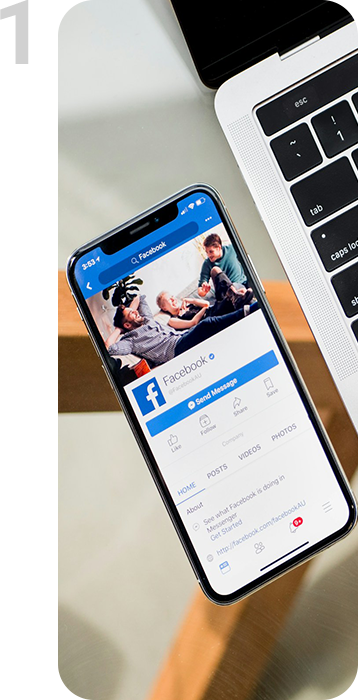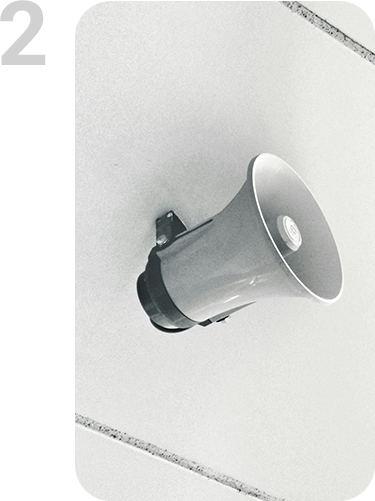Media Planning
The Cornerstone of a successful advertising campaign
Media planning is the strategic process of determining where, when, and how to deliver your advertising message to reach your potential customers effectively. It involves selecting the most suitable media channels, such as digital advertising, broadcast media, print media, and popular social media platforms, to achieve your business goals. The aim is to create a media plan that maximizes the impact of your advertising campaign while staying within budget and driving traffic to your products and services.
A media planner is responsible for analyzing the media landscape and selecting the best platforms to connect with your target audience. This includes understanding the pros and cons of various media channels, such as traditional media like radio stations and newspapers and magazines, as well as modern digital and social media platforms like Facebook ads, where click-through rates and real-time performance tracking are key metrics.

Why Do You Need a Media Plan?
Developing a comprehensive media plan is essential for a successful advertising campaign. Without a structured plan, your marketing efforts could lack focus, miss potential customers, and fail to reach your target audience efficiently. Here’s why a media plan is crucial:

Targeted Reach:
A media plan helps you select the most appropriate social media channels and advertising platforms to reach your target audience. Whether you’re using Facebook ads or broadcast media like TV and radio stations, a targeted approach ensures that your marketing message reaches the right people at the right time. With tools like email marketing and blog posts, you can further personalize your outreach.

Cost Efficiency:
By creating a detailed media plan, you can allocate your budget more effectively. This allows you to focus on ad formats and platforms that offer the highest return on investment (ROI), minimizing wasted spend. Leveraging a mix of video content, social media posts, and email marketing can help you optimize results without overspending.

Optimized Media Mix:
A successful media plan helps you create a balanced media mix. This includes a combination of traditional media (such as print, radio, and TV) and digital strategies like social media posts and search engine marketing (SEM). By diversifying your approach across multiple social media platforms like Facebook, Instagram, and LinkedIn, you can increase brand visibility and engage users across various touchpoints.

Enhanced Media Content:
Tailoring your content creation to fit each platform enhances your campaign’s effectiveness. Images and video for Facebook ads, email marketing campaigns, and blog posts should differ from content created for traditional media like newspapers. The format and messaging of your ads should align with the strengths of each platform, ensuring you connect with your audience.

Measurable Results:
A solid media plan provides a framework for tracking the performance of your campaign. By setting clear objectives and utilizing real-time analytics, you can measure click-through rates, audience engagement, and conversions, enabling you to adjust your strategy accordingly.
Why Do You Need a Media Plan?
In today’s rapidly changing media landscape, understanding the various media includes digital and traditional options. Here’s a look at key forms of media and how they can drive success in your advertising campaign:
Digital Media
Digital media is a cornerstone of any modern media plan, allowing for real-time engagement and precise targeting. Here are some key aspects of digital media:
Social Media Platforms: Using platforms like Facebook, Instagram, Twitter, and LinkedIn is crucial for reaching a highly engaged audience. Facebook ads are especially effective for targeting specific demographics based on interests, location, and behavior. This helps increase brand awareness and drive potential customers to your website.
Display Advertising: Banner ads, video ads, and interactive content placed on various websites help attract attention and drive traffic.
Search Engine Marketing (SEM): Pay-per-click (PPC) ads on search engines like Google help capture audiences actively searching for products and services similar to yours, making SEM a critical part of your digital strategy.

Broadcast Media
Despite the rise of digital advertising, broadcast media like TV and radio remain valuable for reaching broader demographics:
Television: TV ads are ideal for building brand awareness on a large scale, particularly for campaigns where visual storytelling is key.
Radio: Radio stations allow for highly targeted advertising, especially if you’re aiming to reach local audiences or specific listener demographics.

Print Media
While print media has seen a decline, it still holds value, especially for targeting older audiences or specific industries like luxury goods:
Newspapers and Magazines: Print offers a tangible presence and credibility. It can be a great complement to digital ads by providing a more lasting impression.
Direct Mail: Personalized direct mail remains effective, especially when integrated with a digital strategy to encourage engagement and conversions.

Out-of-Home (OOH) Media
Out-of-home (OOH) media such as billboards and transit ads are perfect for reinforcing your campaign message:
Billboards: Positioned in high-traffic areas, billboards are ideal for building brand awareness and reaching a mass audience.
Transit Ads: Ads on buses, trains, and at transit stations provide repeated exposure to your message for daily commuters.

How to Choose the Right Media Mix
Choosing the right media mix is critical to the success of your media plan. A media planner needs to consider the target audience, campaign objectives, budget, and the strengths of each media channel. Here are some tips for selecting the ideal media mix:

Understand Your Audience:
Know where your audience spends time and how they consume media. Are they more active on popular social media platforms like Facebook and Instagram, or do they engage with traditional media? Understanding this helps you choose the right media to reach your potential customers effectively.

Align with Campaign Goals:
Your media mix should align with your business goals. If your goal is to increase brand awareness, you may prioritize social media platforms and OOH media. For driving immediate conversions, digital options like SEM, email marketing, and Facebook ads can be more effective.

Budget Considerations:
Keep your budget in mind. TV ads and print media can be more expensive, while social media platforms often offer more cost-effective ad solutions with measurable performance metrics, such as click-through rates and conversions.

Test and Optimize:
Regularly testing different media channels and ad formats allows you to optimize your strategy based on real-time data. Regular optimization ensures your advertising campaign remains effective over time.
